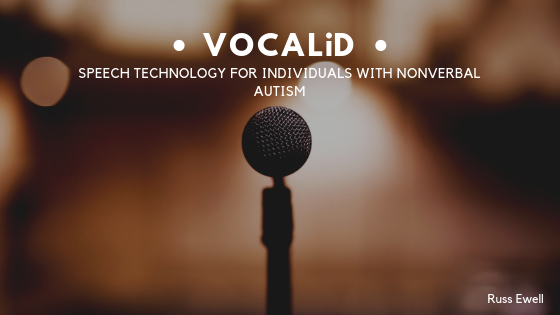Close to 25% of all people with Autism are considered nonverbal. These individuals rely on gestures and movements or minimal vocabulary to communicate with others. As one can imagine, this comes with a series of challenges as well as social barriers for people with Autism. Many parents report that their child with Autism has experienced bullying at school due to their lack of communication.
In this technological era, there are copious technologies that offer automated voice assistance from a touch-screen device. An iPad now offers applications that show pictures of objects and, when clicked on, will project the word in a robotic voice. However, the personalization is still lacking from this technology, which can cause emotional distress for an individual with nonverbal Autism. Luckily, VocaliD founder Rupal Patel has a solution.
VocaliD is a new technology that combines the individual’s real voice with that of a ‘voice donor’ in their database. This combination provides the individual with nonverbal Autism with a unique pseudo-voice personalized to match their own. Patel’s technology starts by capturing a recording of the individual saying a word or syllable. From there, Patel’s database full of tens of thousands of voice donors filters by factors like age, gender, and regional dialect. Pitch and volume of the recipient’s natural vocals are also considered when matching with a donor.
The goal of this technology is not to provide just a voice to individuals with nonverbal Autism – this is available through many different applications and technologies. The goal is instead to give the individual a unique and clear voice that is representative of their real personality. The psychological benefits of achieving this goal are immaculate.
Patel has found that most individuals who own this assistive technology can show hesitation in utilizing them. This could be because the voice cannot be completely personalized. Two individuals using the same technology will likely have the same “voice” regardless of their age, gender, or background. This naturally discourages people, especially children, from using their assistive technology for fear of being made fun of or misunderstood.
With VocaliD, Patel and the other developers hope that the utilization of the technology could also encourage children and adults with nonverbal Autism to become more verbal over time. There is evidence that suggests that children who use technology for speech assistance regularly will learn to form and say words in their own voices.
While this technology is still very new, the promise of personalized assistance to children and adults with any form of Autism is an inspiring step in the right direction.
